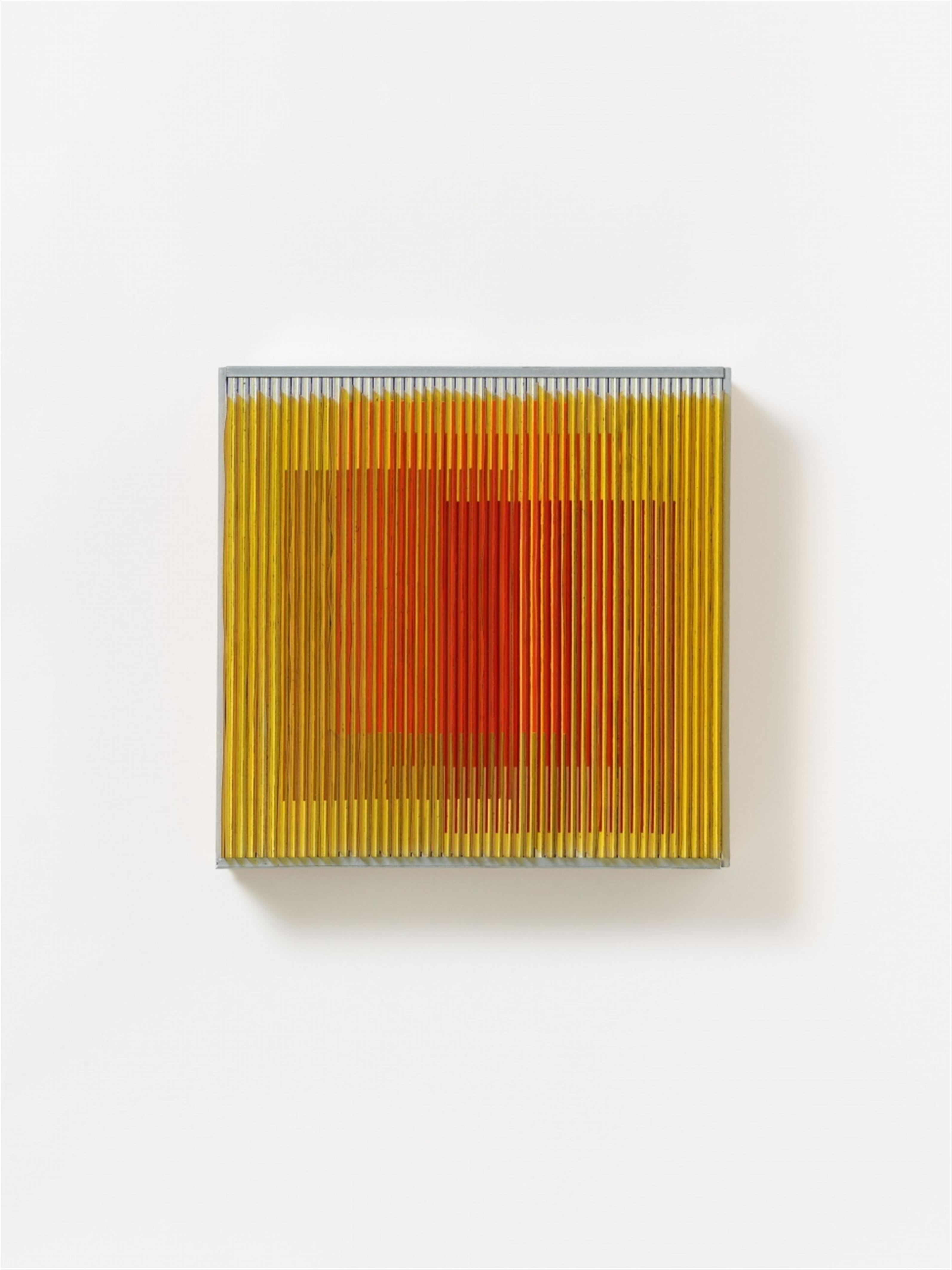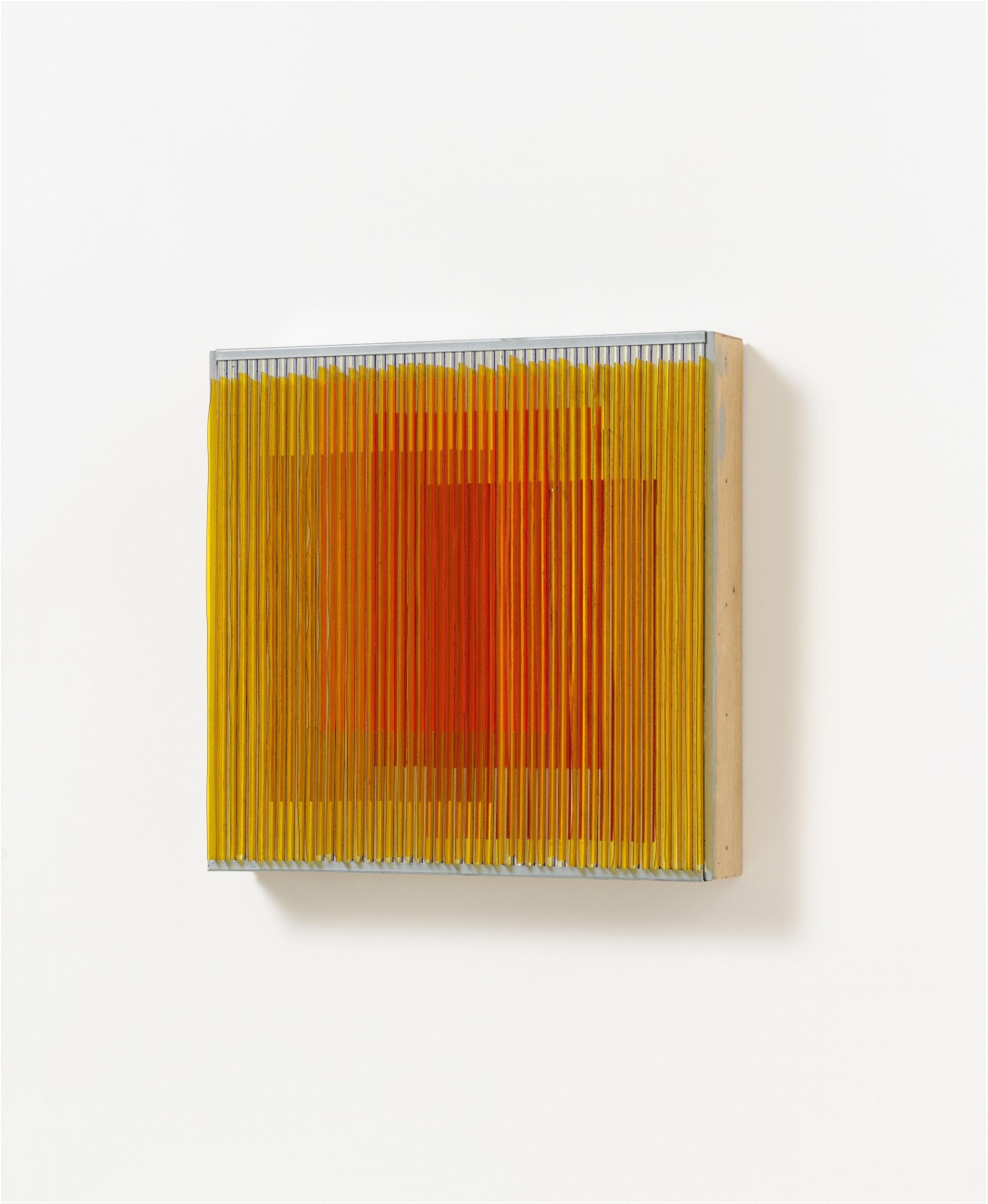Carlos Cruz-Diez
Physichromie No.381
1968
Plastic slats between painted wooden sticks in aluminium on panel. 30 x 31 cm. Framed. Signed, dated, titled, and inscribed 'PHYSICHROMIE No.381 CRUZ- DIEZ PARIS JAN. 1968' verso on panel and with dimensions. - Minor traces of age.
Carlos Cruz-Diez, born in Caracas in 1923, first travelled to Barcelona in the mid-1950s and later to Paris where he met the gallery owner Denise René - a fateful encounter: He began to experiment with kinetic, constructive and concrete works. In 1960, he moved to Paris and followed his compatriot and friend Jesús Rafael Soto. In 1965, Cruz-Diez participated with Josef Albers, Victor Vasarely and many others in the legendary exhibition 'The Responsive Eye' at the New York Museum of Modern Art and became a co-creator of the now internationally renowned Op Art movement. The 'Physichromies', as the artist called them, already formed a central group of works at that time. While still in Caracas, he began to examine the influence of light on colours in the perception of the viewer. Physichromes, such as this work here, are usually built up with closely parallel metal or plastic rails, described by the artist as “light modulators”, on a solid metal plate. These fine rib-rails are in turn covered with coloured paper strips in such a way that, under differentiated light, an additional pattern becomes visible such as interlocked squares as in this example. The pure yellow and red stripes, and the orange stripes as a result of the mixture of the two, change their colour for the observer according to distance and viewing angle, releasing this play of colour and form that optically floats as if imaginary against the background of the base plate. The artist also uses the phenomenon of additive perception, which occurs when two strong colours, such as red and green, collide without visual separation and fictitiously produce a further tone from the mixture, which is, however, not physically existent. Günter Fruhtrunk, Soto and other artists who pay homage to Op-Art also work with these visual phenomena that deceive the viewer's perception.
Provenance
Galerie Uwe Michael, Darmstadt; private collection, North Germany




